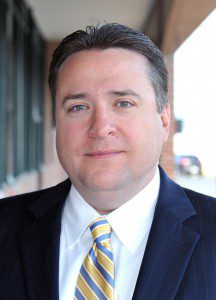WESTFIELD – The Elm Street Urban Renewal Plan was presented to the City Council last night with the hope that it is approved at the June 6, 2013 session.
The plan was approved by the Westfield Redevelopment Authority and the Planning Board earlier this spring, but must also be endorsed by the City Council, which referred it to the Legislative & Ordinance Committee last night, before it is sent to the state Department of Housing and Community Development (DHCD) for its final review and approval.
The Urban renewal plan will become the cornerstone of downtown revitalization and drew heavily on goals and objectives developed in the “Rethinking Downtown” revitalization master plan adopted by the city in 2009.
Kathy Witaliz, chairwoman of the WRA, said her board members “are very proud of the document before you tonight. A lot of work, debate, diligence and public input has gone into this document.
“This is a solid plan, it is a thoughtful plan and it is a plan that will provide development that will anchor our downtown and our city for years and decades to come,” Witaliz said. “This plan is a smart plan. It will be a public-private partnership plan. It is a community plan.”
“I hope the City Council, the folks here and (watching the broadcast) at home can support this project as the WRA and Planning Board has. It is an exciting time for Westfield and this document will bring us to the next step that, after many year, has never been taken,” Witaliz said.
WRA Executive Director Jeff Daley, who is also the City Advancement Officer, said the city’s goal is having the plan in place by July 1, the beginning of the 2014 fiscal year, to release available federal funding to purchase five private properties, including the Flahive Building on Arnold Street and begin the process of relocating businesses and tenants. The city already controls six of the 11 parcels that will be redeveloped under the urban renewal document.
“This has been a public process, Daley said. “This plan was not developed in a vacuum. The talk of the town, for the past 27 years, has been the hole on Elm Street since 1985 (when the former Newberry’s building burned to the ground).”
Daley said the Urban Renewal Plan will be the foundation “to begin implementation of a project that will change downtown Westfield forever.”
The proposed Elm Street development project is a mix of public and private investment and is comprised of three elements, a mixed-use commercial building to be built through private investment, and a transportation center and a parking garage, both financed through federal and state funding.
The city has facilitated that by acquiring environmentally contaminated property, performing environmental remediation and assembling the project site to facilitate development. Daily said that the $2 million cost of that effort would have never been accomplished if the city had continued to wait for private investors.
Daley said the acquisition and remediation work completed to date has cost roughly $1 million, with the city allocating $200,000 in startup funding and that next fall he anticipated that “I will be coming back to return $125,000 to the city, so the city’s financial exposure will be further reduced through grant agreements and reimbursements.”
“The state has earmarked money,” Daley said. “When this plan is approved (by the DHCD), we will begin working to secure that funding.
Daley said the goal is to have “the Flahive Building on the ground (demolished) by the end of the calendar year.”
Ward 6 Councilor Christopher Crean, whose parents still live on Meadow Street, commended the WRA and Daley for pushing the urban renewal plan and the potential for a privately-financed Elm Street project.
“I can’t think of a more difficult task,” Crean said. “You brought citizens into that process and as a citizen who grew up downtown I want to tell you you’ve done a great job. Our focus should be to give a clean (parcel of land) to attract private developers.”


